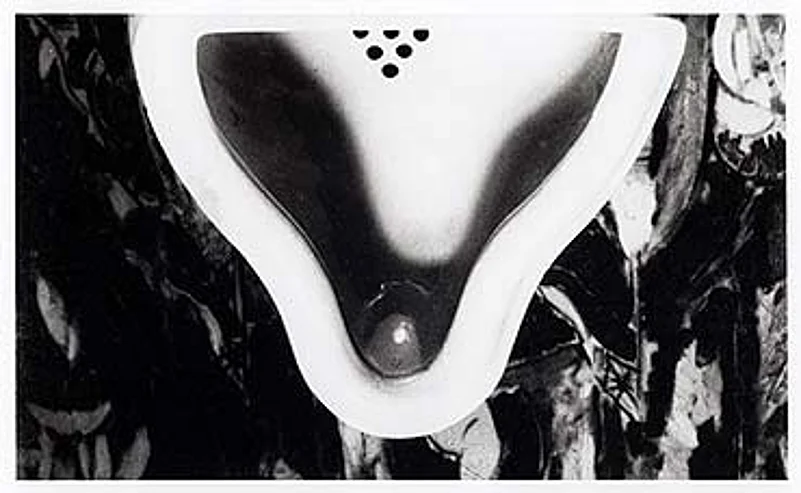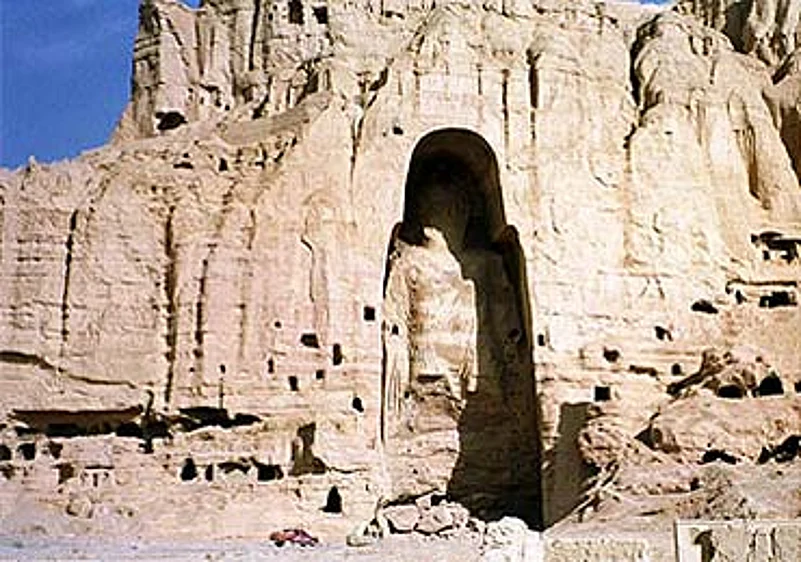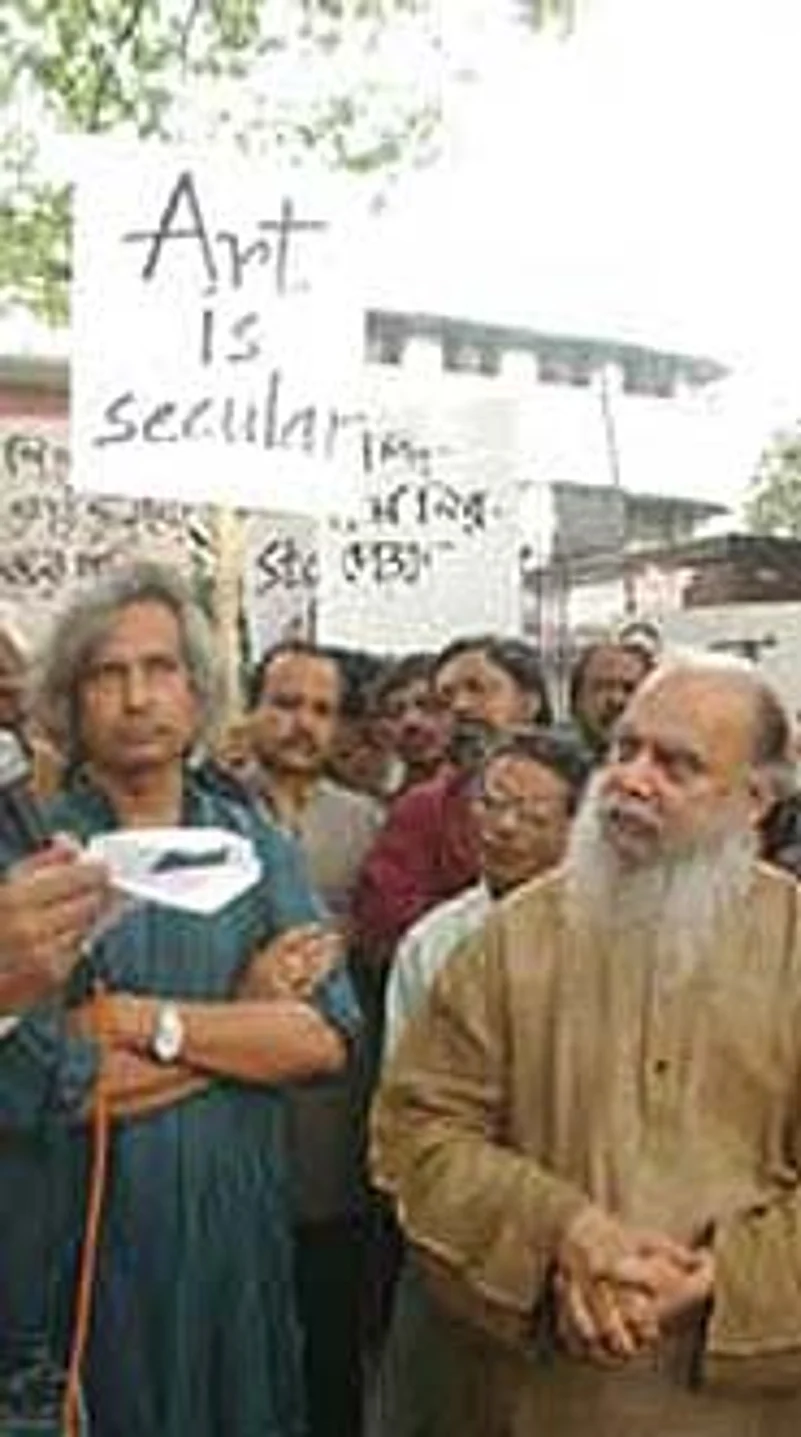Once the events in Baroda came to a head, theycouldn't be ignored, partly because of the persistent queries they raised.What is a 'work of art'? they seemed to ask. Is it meant for edification oramusement, or some other, mysterious purpose? By some coincidence, it being May -- a month that exacerbates tempers, but also a fecund time, apparently, forbringing poets and artists to the world -- the birthday celebrations ofSatyajit Ray and Tagore were taking place at almost the same time as theinternal examinations at M.S. University, which were to be turned by the VHPinto an occasion for a larger quarrel. The celebrations, too, their idiom ofdocumentary footage, speech-making, singing, and the relentless (yet,nevertheless, intermittently exciting) exhibition of two oeuvres -- Ray's andTagore's -- brought these questions to me in a wholly different register: 'What is a work of art?';'How do we protect it?'; 'Does it needprotection?'
The last question probably needs competing answersdepending on the context in which it is asked. In relation to Chandramohan'sexamination entries (the one I've seen a picture of consists of a crucifixwith a penis hung above an expectant 'urinal'), the answer is an unequivocal 'Yes'.(Chandramohan, though, uses the commode rather than the lavatorialurinal in his exhibit; its renaming refers to a piece of canonical art historyI'll return to presently.) 'Yes', because this particular art-work,despite being produced by a student -- or perhaps because it was produced byone -- has educative qualities that the vigilantes have missed. Firstly, it'ssalutary to be reminded of the role of physical evacuation in our national,spiritual, imaginative life; it's at least as necessary as the faux-Victorianmessages -- such as "Cleanliness is next to Godliness" and "Commit noNuisance" -- that are scattered through our public spaces. The counterpointto those god-like ordinances is not the solitary man shitting on the railwaytracks, who's either humbled by not understanding what the signs mean, orignores them altogether; the counterpoint lies in the transformation ofexcretion into representation, 'urinal' into art-work, which sends out itsown, equally strong directive.
Secondly, like many others before him, Chandramohanis asking his viewers to reconsider rival definitions of the sacred, withan evangelizing zeal, even youthful obviousness. For, as we well know, eversince Marcel Duchamp decided in 1917 to display one, upside-down, in anexhibition space and call it Fountain (his intentions were thwarted notby a culture police, but by the organizers), the urinal has become a sacred,epiphanic object in the history of modern art, and, through over-exposure,almost as unpromising a symbol as the cross itself; it is, therefore, inconstant need of reinvention. India, with its proliferating but repressed bodilylife, is as good a site as any for the resurrection of the urinal.

The Fountain by R. Mutt by Marcel Duchamp, photographed by Alfred Stieglitz, courtesy,the MetropolitanMuseum of Arts
One routetowards reinvention is parody, which is palpably among Chandramohan'sregisters. How long has the lone, erect, standing-up action of male urinationbeen associated with the parodic, slightly scandalous conundrum of modern art inthe popular imagination? The English phrase, "taking the piss", which meansto mock or make fun, or make a fool of somebody, and which has been in currencyfor a while, might well have originated as a shrewd working-class observation onthe Duchamp readymade.
But to return to the question: 'Does art needprotection?' -- if the context in which it's put resembles the birthdaycelebrations of Ray and Tagore, the answer must be 'No'. With Ray, it'sstill possible to view the art-work -- in this case, the film -- outside ofthe parameters of ritualized obeisance, and be compelled again by it. WithTagore, it's become much more difficult, so mediated is he, to us, through hisinterpreters: the various professional readers, singers, and dramaturges whogather tirelessly around his work. Not long ago, before the wailing, earnestfanfare of 25th baisakh was under way, I was invited to a mansion toattend a reading from the poet's works: a preamble of things to come. Theevent took place in an elegant, chilly drawing room, and the intimate, physicalinterface between performance and audience made me think that the person who'dput this together had paid quite an unexpectedly convincing homage to Jorasanko,towards luxurious domestic setting, almost Buddhist in its composure, and thepersistence of space, narrative, and human expectation in the midst of it.

And yet, having borne the brunt of many Tagore-songsin my life, a certain soaring quality in their author almost unfailinglytroubles my darker side. I could see his portrait hanging on a wall on the left,sage-like but for the teenager's romantic eyes, and was discomfited to feel anirresistible urge to turn it upside down. I suppose a small wave of irritationwas the cause; but it was also to escape that gaze, which had taken in such anextraordinary amount of the world, and which we no longer notice. I began tospeculate about what might justify an upside-down picture of Tagore as anart-work. Because it takes very little, a gesture, even a strategic knock, tomove an object from the space it ordinarily occupies into the one we call 'culture'. Personally, I don't think of Tagore, in the incarnation inwhich he's presented to us, as 'culture' except in a nationalistic sense:and it's nationalism that explains the tone in which the songs are sung, poemsrecited (the performance that evening, to be fair, was, in spite of beingintermittently tremulous, an intelligent exploration of the relationship betweenreading and setting), and the manner in which he and Ray have often beenverbalized in the last fortnight.
My latent impulse towards vandalism (whichpredated the Baroda episode by more than a week) can, in retrospect, be relatedto and perhaps contrasted with the vandalism that informs the VHP'sactivities. Art's more anarchic impulses are deeply anti-nationalist innature; this is something Tagore knew first-hand. And yet there's anintriguing juxtaposition between the violence of the art-work and the violenceof nationalism, especially in these days of immediate technologicalreproduction.

The righteous arbiters who blew up the Bamiyan Buddha (and it'snationalism, more than religion, that sanctions such outrage) were, in allowingtheir 'work' to be recorded by a camera, disseminating it to two kinds ofaudiences, in order to vindicate and satisfy one, and shock and awe the other.But, in letting the moment be reproduced, by permitting it, in effect, to passinto the realm of symbolism, they were also letting its purpose be alteredforever. Very little -- only a question of syntax and symbolism -- separatesthe violence of art-work from that of nationalism, and from the possibility ofone rearranging the other in its own language.
Both 'art' and religion have long been (in thelatter's case, with a vicious new emphasis in the last twenty years)assimilated into a form of nationalism in our country; this is why Hinduism, inthe way it's elucidated by Radhakrishnan, or represented in cinema, is oftenvacuous or assertively pious; it also explains the piety with which the Tagore-songis rendered. This isn't world-denying spiritual piety; nor is it an example ofan Arnoldian 'high' cultural piety; it's the piousness of nationalism.That's why it's no surprise to learn that a survey has discovered that theeducated middle class is essentially in agreement with the VHP that artshouldn't "cause offence".

Here, let's have a quick look at a word that'scome up anew in the last week, with a resonance it doesn't usually have inthis country. In a photograph of the protest at the Academy ofFine Arts, published in The Telegraph, a sign hovering over the heads of Jogen Choudhury and Shuvaprasannadeclares, "Art is Secular". This word, 'secular', given to usby our Constitution, was famously reinscribed in our national life as a noun, 'secularism', with a very particular meaning: respect for a plurality ofcultures and faiths. In this way, the 'secular' becomes an embodiment ofnationalism, and intellectuals in India conduct a discussion that's primarilynationalist, based on a constitutional understanding of the word, when speakingof it. Yet the sign saying "Art is Secular" is not so much defending afeature of the Indian nation-state as it is an aspect of Indian modernity; thisdistinction needs to be made; the fact that it isn't leads, in part, to theabrasions we've been witnessing recently. The interior, creative life of the 'secular', which is one of the most crucial constituents of our modernity,of, in effect, ourselves, has never been fully acknowledged in India; and it hasno constitutional defence, unless you place 'art' under the inadequaterubric of 'freedom of expression'. After all, 'culture' is neither afaith, nor a linguistic state, nor a recognized world-view. How do we defend 'art' as Indians unless we admit to ourselves that there are other laws andvalues that govern our lives as 'secular' human beings besides theconstitutional ?
















